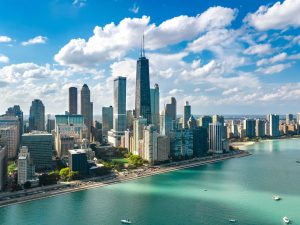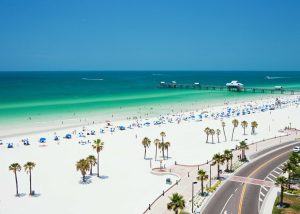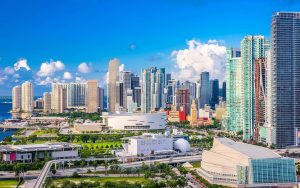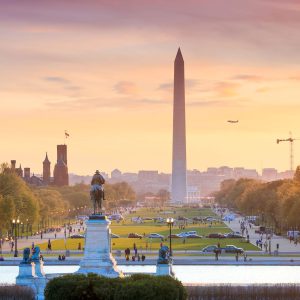Chicago
Steely skyscrapers, top chefs, rocking festivals – the Windy City will blow you away with its low-key cultured awesomeness.
VOTED BEST BIG CITY IN US

 6
6

6 YEARS IN A ROW
Discover why Condé Nast Traveler readers voted Chicago the Best Big City in the U.S. for a historic sixth year in a row.
Chicago, the “Windy City” as it is often called, lies along the shores of Lake Michigan. Known for its vibrant arts scene, numerous cultural attractions, excellent shopping, and interesting architecture, this city attracts visitors from the US and around the globe.
Chicago enjoys a worldwide reputation as a focal point of 20th-century architecture and art, with architects such as Louis Sullivan and Frank Lloyd Wright, and artists like Picasso, Mirõ, Dubuffet, and Chagall leaving their mark.
The city also has much to offer in the sporting sphere, too, with the Chicago Bears in American football, the Chicago White Sox and Cubs in baseball, and the Chicago Bulls in basketball.
Last, but not least, are the beautiful beaches that stretch along the waterfront, attracting throngs of sun seekers in the summer.
Deciding when to visit Chicago may depend on your interests, particularly if you are coming for sports or cultural events, but spring until fall is the best time for weather.
For a complete look at places to visit, see our list of the top attractions and things to do in Chicago.
Art & Architecture
It’s hard to know what to gawk at first. High-flying architecture is everywhere, from the stratospheric, glass-floored Willis Tower to Frank Gehry’s swooping silver Pritzker Pavilion to Frank Lloyd Wright’s stained-glass Robie House. Whimsical public art studs the streets; you might be walking along and wham, there’s an abstract Picasso statue that’s not only cool to look at, but you’re allowed to go right up and climb on it. For art museums, take your pick: impressionist masterpieces at the massive Art Institute, psychedelic paintings at the midsized Museum of Mexican Art or outsider drawings at the small Intuit gallery.
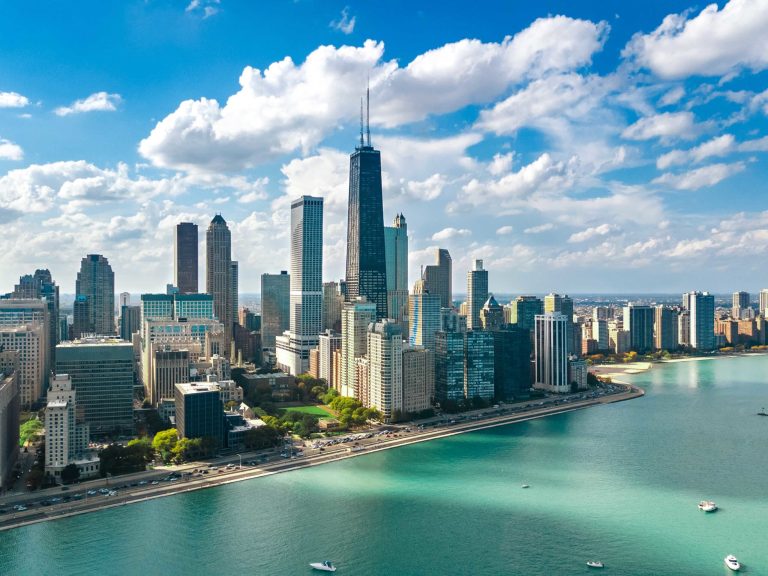
Sports Fanatics
Chicago is a maniacal sports town, with a pro team for every season (two teams, in baseball’s case). Watching a game is a local rite of passage, whether you slather on the blue-and-orange body paint for a Bears football game, join the raucous baseball crowd in Wrigley Field’s bleachers, or plop down on a bar stool at the neighborhood tavern for whatever match is on TV. Count on making lots of spirited new friends. Should the excitement rub off and inspire you to get active yourself, the city’s 26 beaches and 580 parks offer a huge array of play options.
Chowhounds’ Delight
Loosen your belt – you’ve got a lot of eating to do. On the menu: peanut-butter-and-banana-topped waffles for breakfast (at Stephanie Izard’s Little Goat), pork-shoulder posole and garlicky yucca enchiladas for lunch (at Dove’s Luncheonette) and fine dining on foraged foods for dinner (at Iliana Regan’s Elizabeth). You can also chow down on a superb range of global eats from Vietnamese pho to Mexican carnitas, Polish pierogi and Macanese fat rice. Still hungry? Order a late-night deep-dish pizza or seek out a hot and spicy Italian beef sandwich at a local fast-food joint.
Visit the Art Institute of Chicago
The Art Institute of Chicago is a world class museum with hundreds of thousands of artworks. The diverse collection spans thousands of years and includes pieces from a variety of media including painting, prints, photography, sculpture, decorative arts, textiles, architectural drawings and more.
he Institute is known for its collection of impressionist and post-Impressionist paintings including Georges Seurat’s 1884 A Sunday Afternoon on La Grande Jatte, Renoir’s 1879 Acrobats at the Cirque Fernando, and numerous paintings by Claude Monet.
The main building, designed by Shepley, Rutan, and Coolidge in beaux-arts style, was built for the 1893 World’s Columbian Exposition. Several other buildings have been added on over the years and today the complex measures 400,000 square feet.
Walk through Millennium Park
Millennium Park is part of the larger Grant Park, located in downtown Chicago bordered by Michigan Avenue to the west, Columbus Drive to the east, Randolph Street to the north, and Monroe Street to the south. Its centerpiece is a 110-ton sculpture name Cloud Gate,which has a polished, mirror-like stainless steel surface that was inspired by liquid mercury. It reflects the surroundings, including buildings, the sky, and the tourists who walk through its central arch.
Another top attraction in Millennium Park is Crown Fountain, a fascinating modern interpretation of the ancient gargoyle that gives the appearance of water flowing from the mouths of projected images of Chicago citizens. Other popular things to do here include seeing a performance at the Jay Pritzker Pavilion, an outdoor concert venue, and visiting Lurie Garden, which is open to the public at no cost year-round.
Stroll around Navy Pier
The Navy Pier originally opened in 1916 as an amusement area and shipping facility but is now one of Chicago’s most popular tourist attractions. Today, the Navy Pier is made up of 50 acres of gardens, attractions, shops, restaurants, concert venues, and parks. There is a 150-foot Ferris wheel and an historic carousel in Navy Pier Park.
Visitors can also watch a film at the 3D Imax Theater, watch actors perform the classics at the Chicago Shakespeare Theater, or visit Crystal Gardens, a one-acre, six-story, indoor botanical garden. Also located here is the Chicago Children’s Museum. The Pier hosts year-round festivities, including the Chicago Festival in August. Cruise ships leave from here on various sightseeing excursions.
Reach for the Stars at Adler Planetarium
The Adler Planetarium is leaps and bounds beyond the ones most kids get to visit on school trips, and all ages will appreciate the shows and comprehensive exhibits it has to offer. The Adler prides itself in being the first planetarium in the Western Hemisphere, built in 1930 on the shore of Lake Michigan.
The planetarium is home to two dome theaters, which offer a variety of shows, including exploration of Chicago’s night sky, the solar system, and the moon. There is also an extensive array of exhibits that explore topics including life on other worlds, meteors and meteorites, space exploration, the history of the scientific discipline, and even the history of astrology.
There are also several exhibits dedicated to the accomplishments of marginalized groups including female, Latinx, and LGBTQ+ astronomers. Of note is an excellent exhibit that looks at the importance of Islamic astronomers’ contributions and how their studies affected the faith and the world. In addition, there are collections of artifacts from astronomers past, including many antique and ancient sundials, as well as telescopes.
Museum of Science and Industry
At the north end of Jackson Park is the Museum of Science and Industry, founded in 1933, and arguably the most impressive museum in Chicago. It is devoted to the application of natural laws in technological and industrial development.
The museum is thought to be the first in the U.S. to incorporate the idea of “hands-on” exhibits. Visitors are encouraged to interact with hundreds of exhibits. The MSI features permanent and changing exhibits, as well as an OMNIMAX theater.
See the View from the Willis Tower SkyDeck
Until 1996, when the Petronas Towers were built in Kuala Lumpur, the 110 story Sears Tower, now Willis Tower, was the world’s tallest office block. While there are now several taller buildings, the view from here is incredible. On a clear day you can see 40 to 50 miles over four states, and gain a bird’s eye view of Chicago’s impressive architecture.
The Willis Tower took three years to build and was opened to the public in 1974. The building is 1,453 feet tall with an observation area, called the SkyDeck, on the 103rd floor, 1,353 feet above the ground. A glass box with a glass floor, known as the Ledge, juts out from the SkyDeck, where visitors can stand and look directly down at the city below.
Disclaimer: DiscoverAmericas.org and Discover Americas Travel S.L. is a private company specialized in helping its clients with their travels. We are offering travel assistance and travel information, and where applicable, we are linking to our 3rd party partners offering additional services. In case of questions in regards to these 3rd party services, please contact these partner websites.
You could easily spend a lifetime in the US and still feel like you’ve just scratched the surface.
It’s epic on every scale. After all, this is a place where you can watch the thunderous spectacle of Niagara Falls, trek through the soaring Black Hills of South Dakota and cruise along California’s glorious Pacific Coast; where you can ski at Lake Tahoe, go cattle ranching in the Midwest and imbibe live jazz in New Orleans.
The options, it seems, are endless.
We are a private company. Not part, nor endorsed, of US government or any official government agency.

